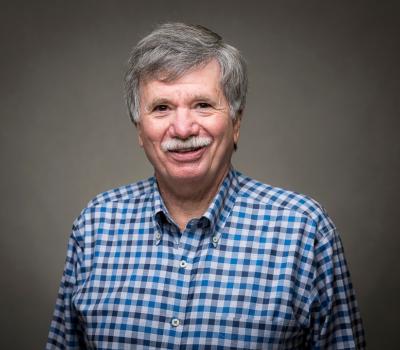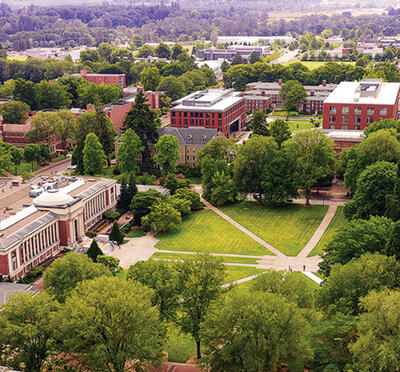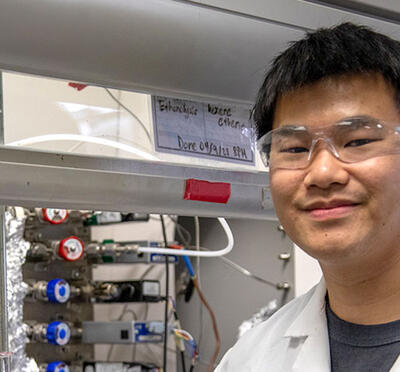Riley Humbert likes to work with her hands, from knitting to rock climbing to building the parts she needs for homebrewing beer. Together with her dad, the fourth-year chemical engineering major built a mash tun, where grains steep and become the sugar water containing all the nutrients yeast need to ferment beer.
As Humbert got more into the science of homebrewing, she decided to see if Oregon State University had any research related to beer and discovered the thriving pilot brewery on campus. As part of a thesis class, Humbert reached out to Chris Curtin, assistant professor in the department of food science and technology, to learn more about his research in brewing microbiology; eventually, she joined his lab. She’s now working on her honors thesis with Curtin, looking at how Brettanomyces, a kind of wild yeast, affects the fermentation and flavor of beer.
“Brettanomyces creates interesting flavors described as horse saddle, Band-Aid, and medicinal,” Humbert said. “This research is fitting because I like beers really, really funky.”
In most beers, Saccharomyces is the yeast used for primary fermentation. Lambic and farmhouse styles use Brettanomyces as a secondary fermentation yeast, fermenting sugars that Saccharomyces can’t. In the lab, Humbert and Curtin are using Brettanomyces exclusively to see how it performs as the primary fermentation yeast and how different strains react to different conditions.
“It’s so interesting to learn more about the process and learn more about what changes the fermentation, how something as simple as keeping it in a colder room versus a warmer room can really change the flavors,” she said.
Humbert, who’s responsible for growing the yeast to be used in fermentation, didn’t know exactly how beer was made before she started homebrewing. But figuring out how things work is what drew her to chemical engineering in the first place.
“Riley has really embraced the opportunity to get involved in research, displaying innate curiosity and a tremendous commitment to all aspects of the process,” Curtin said. “Her project with Brettanomyces requires strong attention to detail, and lots of sampling — and smelling! — at inconvenient times. Riley’s hard work is helping bring this research to fruition.”
Humbert added, “I like the puzzle aspect of it — finding all the unknowns and solving a puzzle. Chemical engineering felt like a nice mix of problem-solving and chemistry.”
Before getting her brew on, Humbert first got involved with research thanks to the Pete and Rosalie Johnson Internship Program. During the summer of her first year, the program connected her with Jun Jiao at Portland State University, where she studied nanoparticles meant to reduce toxic compounds—such as trichloroethylene, a harmful waste product of industrial processes — in groundwater.
Thanks to Oregon State’s URSA Engage program, Humbert then had the opportunity to look at this same problem from a biological perspective during her second year. In the lab of Lewis Semprini, distinguished professor of environmental engineering, she researched the use of gel beads containing organic compounds as a means of reducing waste products in groundwater.
In addition to research, the Society of Women Engineers has been a huge part of Humbert’s college experience. Beginning in the SWE mentorship program, Humbert started going to general body meetings, building relationships with others that helped her navigate her engineering classes. She served as mentorship program coordinator her second year and vice president her third year. During that time, she worked with other members to pilot an engineering-specific curriculum for Beaver Hangouts, which partners with K-12 classrooms to help kids learn about a variety of postsecondary options through the use of technology.
“SWE created this community in engineering of women who all want to help each other out and see each other succeed,” she said. “That makes this big engineering world a lot smaller and a lot more personal.”
From studying water purification methods to growing yeast for beer fermentation, Humbert says, her experiences at Oregon State have helped her develop a wide variety of skills.
“I have done so many things here that high school Riley would have thought were not possible,” she said. “I wasn’t even sure if I was going to be able to finish a chemical engineering degree, and now I’m in my senior year. I’ve learned I can do difficult things. They might be challenging, but not impossible.”




